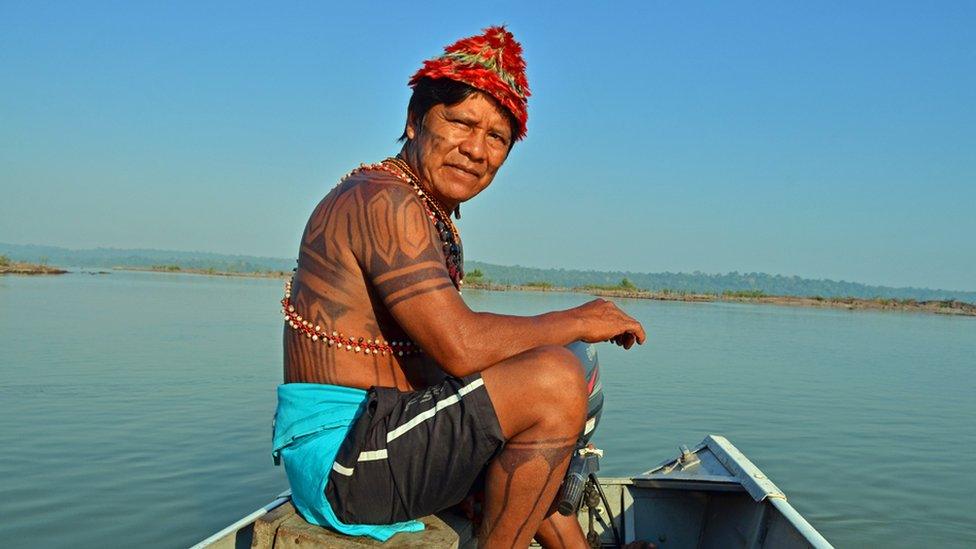Colombia Hidroituango dam: 'The river took my house'
- Published
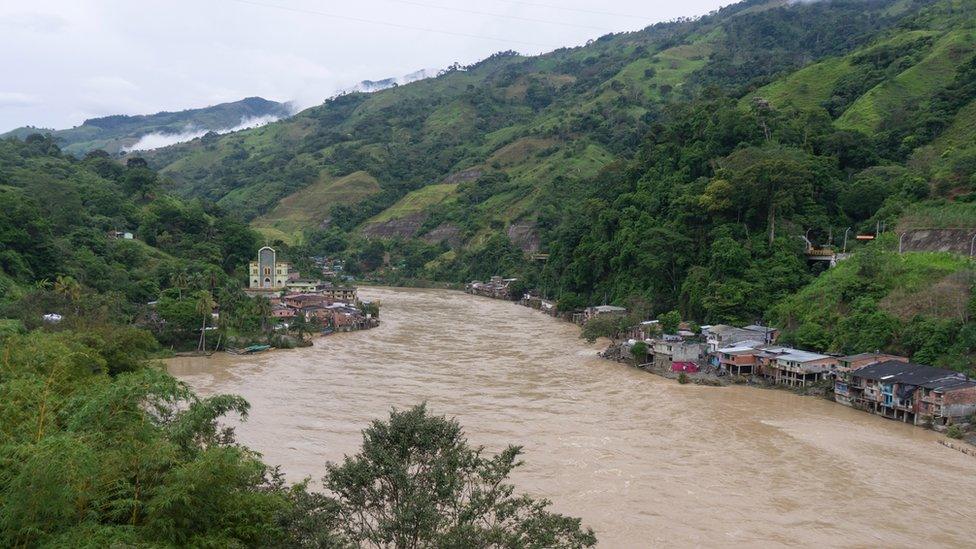
Riverside communities are at risk of flooding after a string of emergencies at the hydroelectric project
"I was in Puerto Valdivia when the first alarm sounded. It was very chaotic. No-one knew whether to run for the hills or along the road, whether to grab the children or grab the elderly. Everyone was going crazy," says Teresa Jaramillo recalling the moment on 12 May when flash flooding hit her small riverside community.
Puerto Valdivia is just one of the communities affected by a series of emergencies which have hit Colombia's largest hydroelectric dam project, Hidroituango.
Tens of thousands of people living downstream from the dam have been evacuated and the emergencies just keep coming.
Rising water
The Hidroituango dam over the river Cauca, about 175km (110 miles) north of the city of Medellín, was just months from completion when on 28 April a landslide near the site blocked a tunnel built to divert the river's flow while construction was going on.
As the project was almost finished, two other tunnels built for the same purpose had already been sealed by the company building the dam, Empresas Públicas de Medellín (EPM). This meant that the tunnel blocked by the landslide was the only remaining outlet.

The project was due to be finished by the end of the year

Supporters of the dam say it will eventually account for 17% of Colombia's power capacity
Further landslides followed and with water levels rising and all outlets now blocked, EPM decided to flood the dam's turbine rooms on 10 May to release the river's increasing pressure on the structure.
While the move caused irreparable damage to transformers and other systems which had already been installed in the turbine room, it did reduce water levels.
But only two days later, one of the sealed tunnels naturally unblocked, causing water to gush through it and creating flash floods further downstream.
Cut off
Puerto Valdivia lay in the path of the flash foods. Fifty-nine homes, a school and a health centre were destroyed and more than 600 people were displaced.
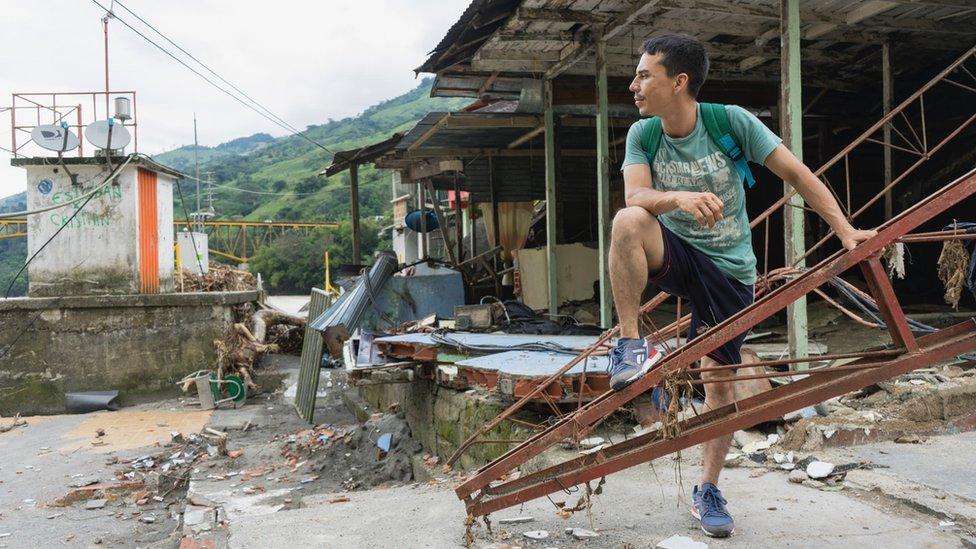
Dozens of homes were destroyed in the flash floods on 12 May
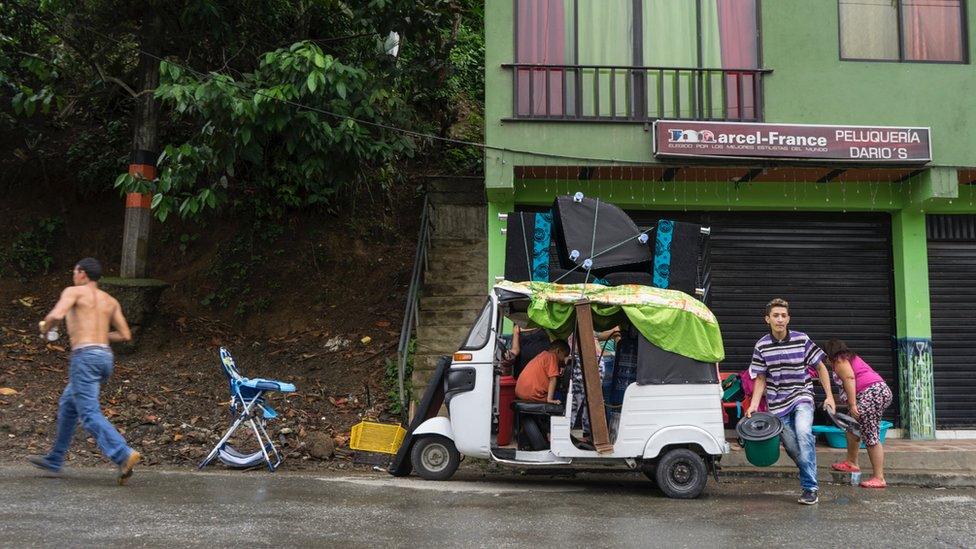
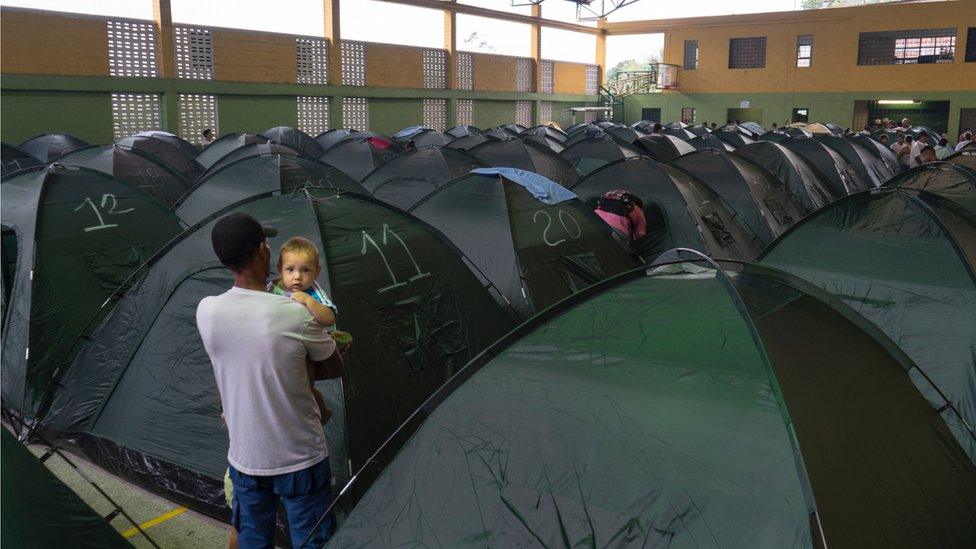
Almost 25,000 people have been displaced and many had to seek shelter in gymnasiums
León Taborda is one of them. "The Cauca river took my house. What do I do?" he asks.
"My wife doesn't want to return to Puerto Valdivia anymore, even if we could. The peace of mind I had there, I won't ever be able to regain it, not living there or anywhere else."
And Hidroituango's troubles seem far from over.
Experts have warned that there is a renewed risk of landslides from nearby mountainsides which could block the water-intake tunnels for the turbine room, as well as the spillway, potentially compromising the integrity of the entire hydroelectric project.
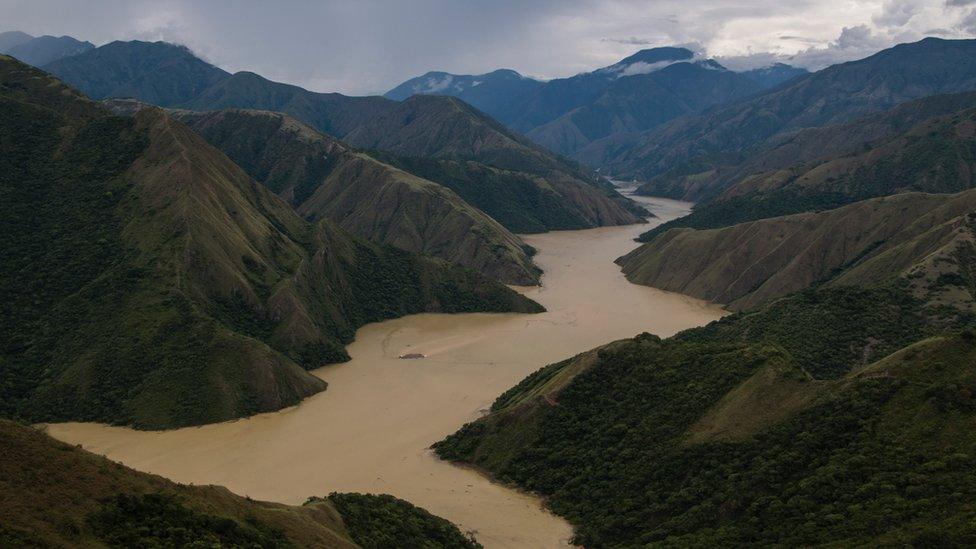
The risk of landslides from the steep mountainsides remains
Almost 24,000 people living downstream of the dam have already been evacuated due to this risk. Another 380 people living upstream have been displaced by the premature filling of the dam's reservoir.
And the residents of Ituango, the town nearest the dam, have been left cut off after the only bridge connecting it to the rest of the country was submerged by the rising waters on 4 May.
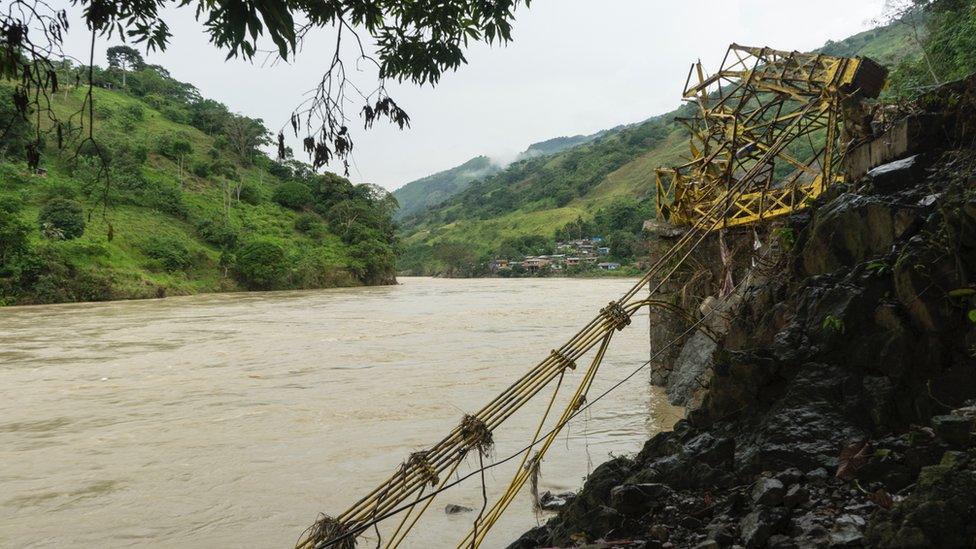
Some bridges were submerged while others were destroyed by the force of the water
Lack of food
Community leader Teresa Jaramillo says the situation is particularly critical in rural communities which have been isolated for three weeks now.
Even the areas not directly at risk of landslides or flooding have begun to feel the effects of the mass evacuation of the riverside communities and the lack of trade.
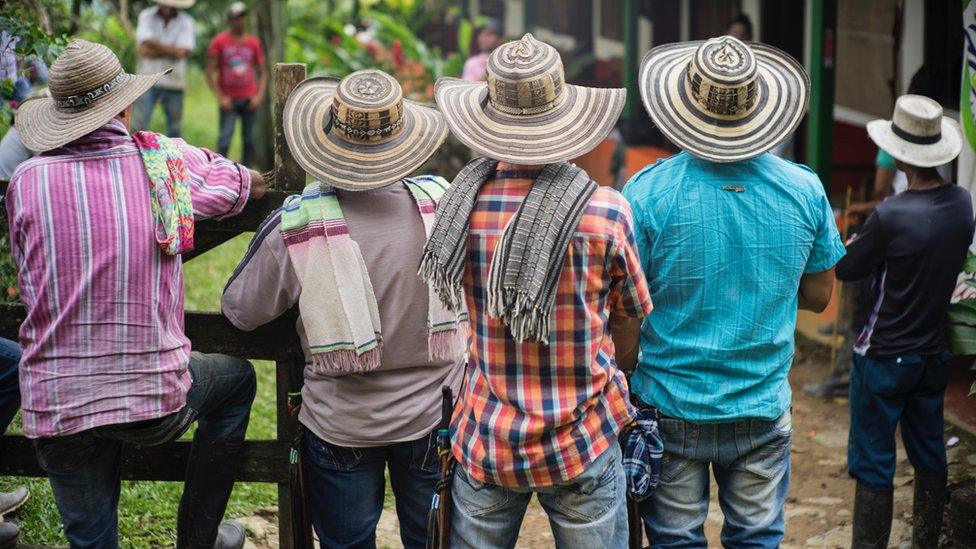
With many communities cut off, ,locals are worried about a lack of supplies
"We only produce plantain and yucca. Everything else is beginning to run out, all other goods," rural leaders say.
Many have so far ignored calls for them to evacuate their land but they say the lack of food is becoming an issue.
"If we have to go to the camps, well, we will have to, but Valdivia is also collapsing with so many people," one man said.
Continuing risk
At a recent news conference, EPM's CEO Jorge Londoño said that communities near the dam would continue to be at risk until the company had figured out a permanent solution.
He suggested that in order to fix the problem, EPM would have to construct a new tunnel to reduce the levels of the flooded river in a controlled fashion, a process likely to take several months.
Environmental activists, who have long opposed the hydroelectric project because of what they say are the inherent dangers in damming Colombia's second-largest river, complain about a lack of oversight.
"How can it be that the same company that is causing so much damage is the one pretending to provide the solutions?" asks Isabel Zuleta, leader of local environmental organisation Ríos Vivos.
"What does that tell us? That in Colombia there is no one that controls the big corporations," she says.
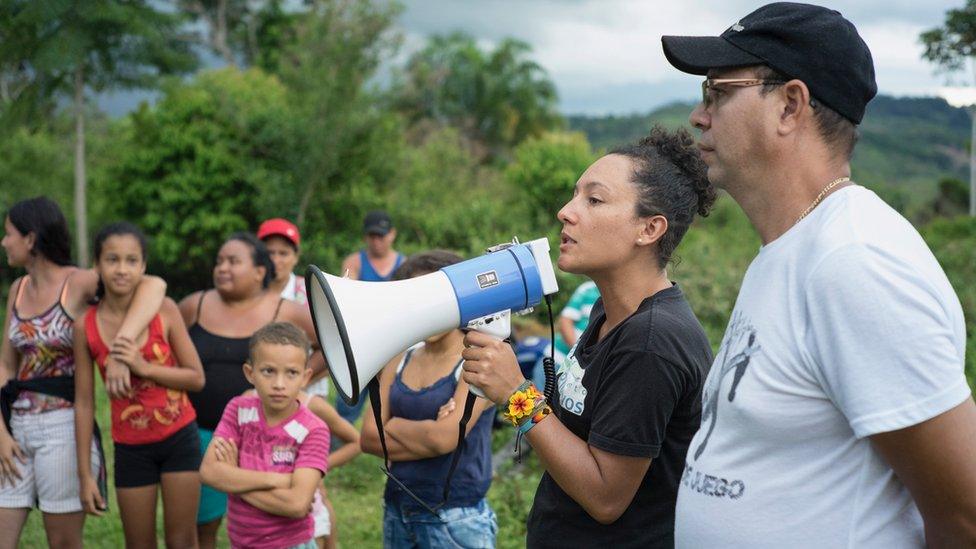
Isabel Zuleta has long been opposed to the hydroelectric power project
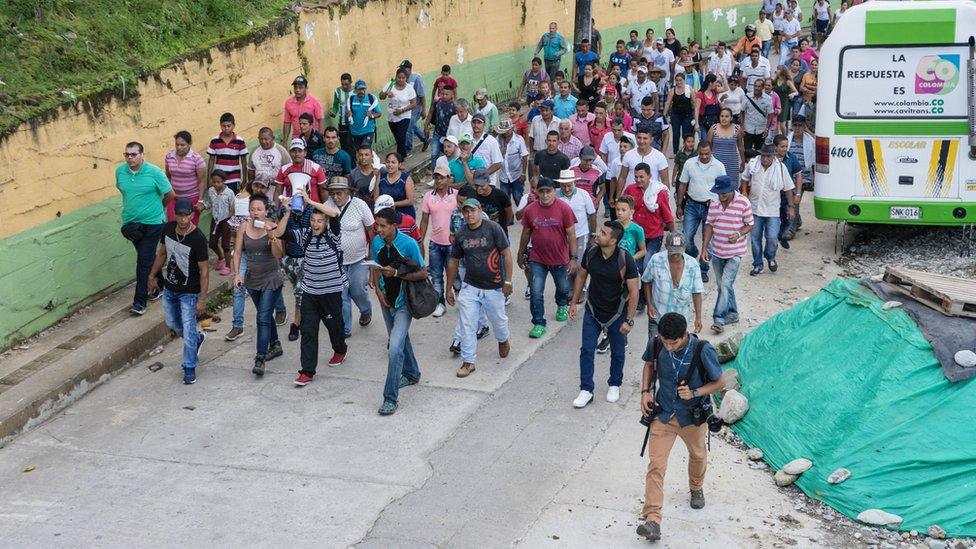
She says residents no longer trust EPM to fix the problems
With the entire workforce evacuated from the site again on Tuesday because of new warnings of landslides, many people living both up- and downstream from the megaproject are in a state of fear.
Ms Zuleta says trust has been eroded. "They said there was no problem, that there was no danger, that everything was under control."
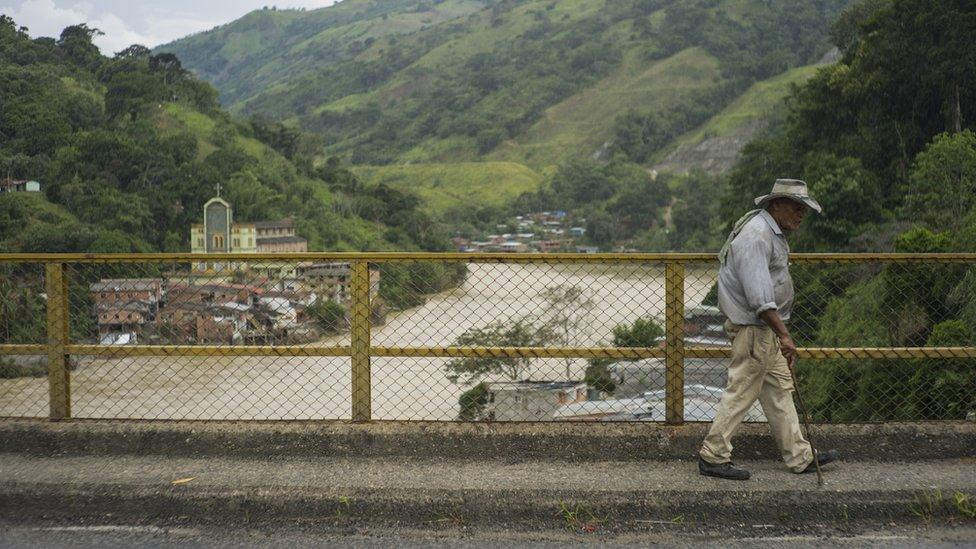
After the flash flooding of 12 May, people living in riverside communities fear for their future
She says that people do not want quick fixes but a river which is allowed to flow freely.
But with the project far advanced - it was due to be completed by the end of the year - and its backers maintaining that it will account for about 17% of Colombia's power capacity, that is unlikely to happen.
All photos by Nicolas Bedoya and Pablo Cuellar from Colombia-based Vela Colectivo, external.
- Published11 May 2018
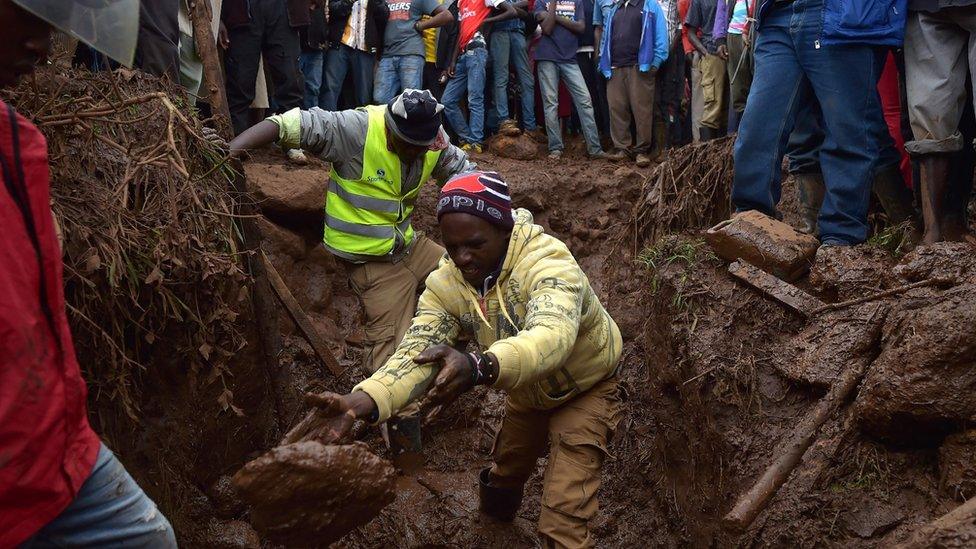
- Published14 June 2017
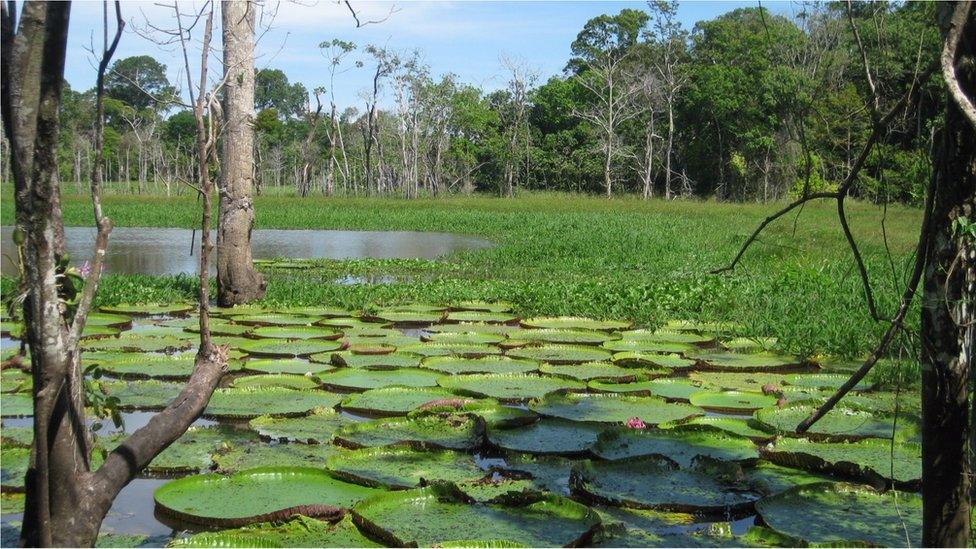
- Published10 January 2017
